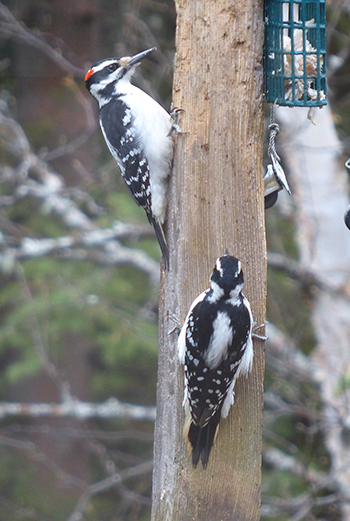Woodpeckers in Florida Population: Types Summary and Preservation
Woodpeckers in Florida Population: Types Summary and Preservation
Blog Article
Introducing the Tricks of Woodpeckers: Behavior, Environment, and A Lot More
Woodpeckers, with their distinct behaviors and specialized adjustments, have actually long captivated researchers and nature enthusiasts alike. By uncovering the enigmas surrounding woodpeckers' behavior and habitat choices, a much deeper understanding of these avian marvels arises, supplying a look into their interesting world.
Woodpecker Behavior Insights
In taking a look at woodpecker actions, a remarkable display of specialized skills and adaptations emerges, shedding light on their exceptional eco-friendly particular niche. Woodpeckers, recognized for their distinct drumming on trees, possess a variety of behavioral traits that contribute to their survival and success in their atmosphere.
In addition, woodpeckers show a distinct feeding behavior defined by their ability to extract pests from tree bark utilizing their specialized beaks. Their lengthy, barbed tongues help in recording target, while their strong neck muscles give security and precision during pecking movements. This feeding strategy permits woodpeckers to gain access to covert insect larvae and extract them with impressive effectiveness.
Habitat Preferences and Selection
What elements influence the habitat preferences and selection of woodpeckers? One important variable affecting woodpecker environment selection is the accessibility of appropriate nesting websites. Woodpeckers generally prefer forests with a mix of fully grown trees that offer sufficient opportunities for dental caries excavation.
In addition, woodpeckers reveal a choice for environments with a bountiful supply of food resources. They are largely insectivorous, eating beetles, ants, larvae, and various other insects found in worn out timber or tree bark. Woodpeckers tend to prefer woody locations with a varied insect population to meet their nutritional needs.
Additionally, the visibility of dead or worn out trees is an additional essential variable in woodpecker habitat option. These trees not only give food sources but additionally use suitable substratum for dental caries excavation. Dead trees are necessary for the maintenance of healthy and balanced woodpecker populations, as they play a vital function in the woodpeckers' life process and community characteristics.
Feeding Practices and Diet Plan Composition
Woodpeckers show a specialized feeding behavior concentrated on foraging for insects within different habitats. Their diet plan largely includes insects such as beetles, ants, caterpillars, and spiders, which they find by touching on tree bark and listening for the sound of movement inside. Woodpeckers utilize their strong beaks to pierce into the wood and their long, barbed tongues to extract target from gaps. In addition to insects, woodpeckers likewise take in tree sap, fruits, nuts, and seeds, including selection to their diet regimen relying on the season and availability of food resources.
The foraging strategies of woodpeckers are well-adapted to their arboreal way of living. Woodpeckers play an essential role in keeping the health of woodlands by managing insect populations and aiding in the decomposition of wood.
Drumming Sounds and Interaction
Using quick drumming audios on numerous surface areas, woodpeckers utilize an unique form of interaction to signal region limits and attract get more mates. This drumming behavior is not just a method of communication yet likewise works as a way for woodpeckers to develop their presence within a certain area. The intensity, speed, and pattern of the drumming can share crucial information to various other woodpeckers around.
Woodpeckers use drumming noises to announce their existence in an area and to advise off potential intruders. The loud and recurring nature of the drumming works as a clear signal to other woodpeckers that the location is currently claimed. This helps in minimizing disputes and decreasing physical conflicts between individuals.

Survival Adaptations and Specialized Composition

Conclusion
Finally, woodpeckers display one-of-a-kind behaviors, such as drumming noises for communication, and have specialized composition for survival in their selected environments. Their feeding habits and diet plan composition even more demonstrate their versatility to different atmospheres. By recognizing these aspects of woodpeckers, scientists and conservationists can better protect and preserve these interesting birds and their ecological communities.
Report this page